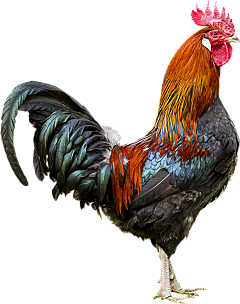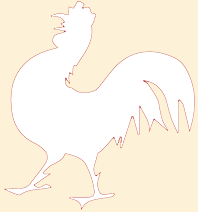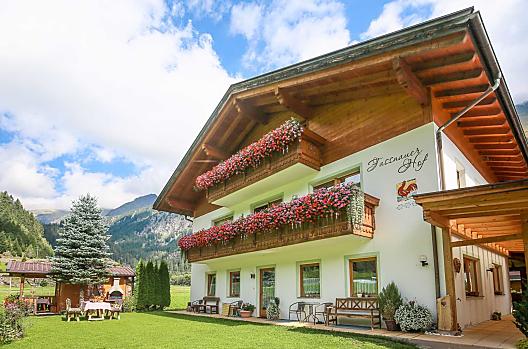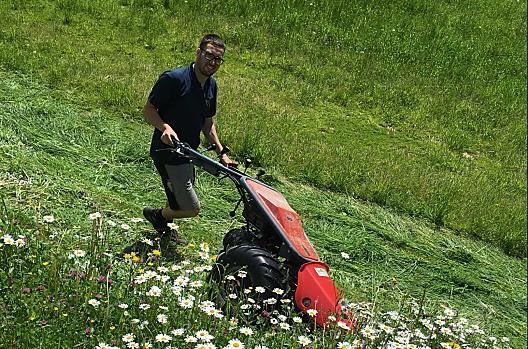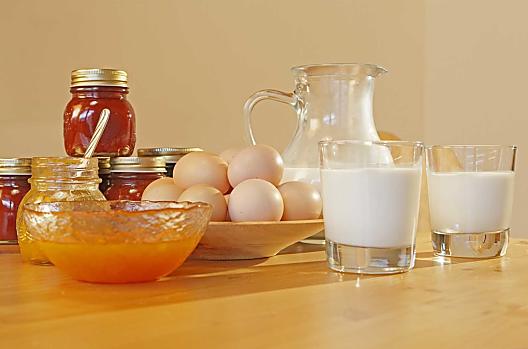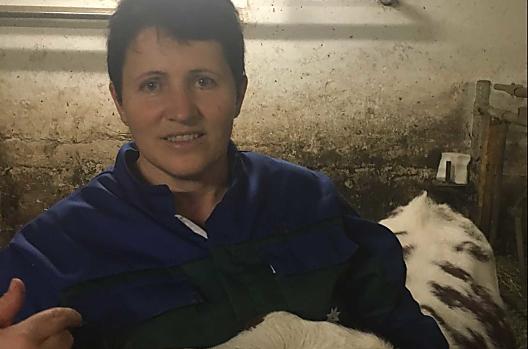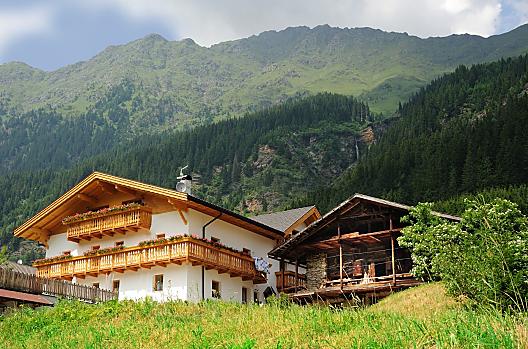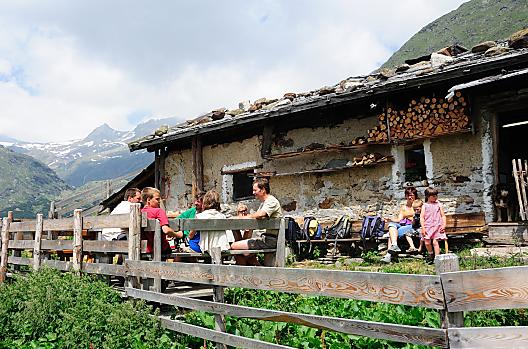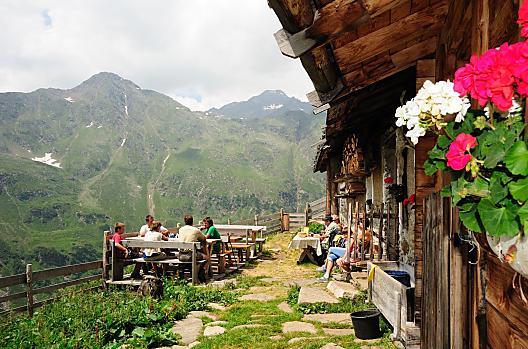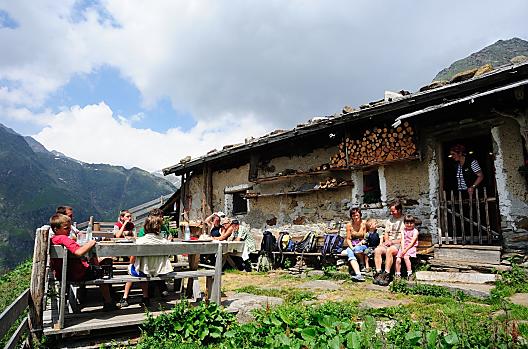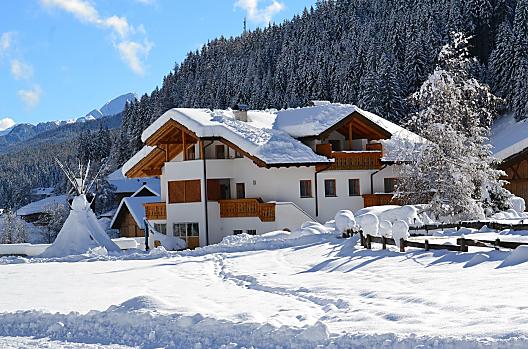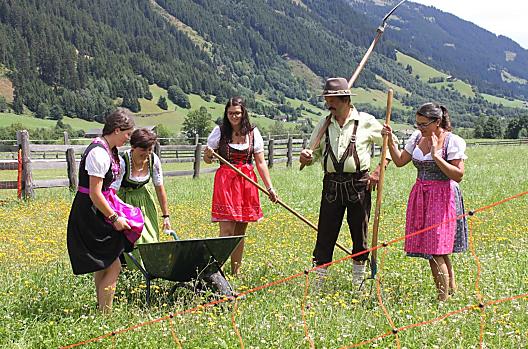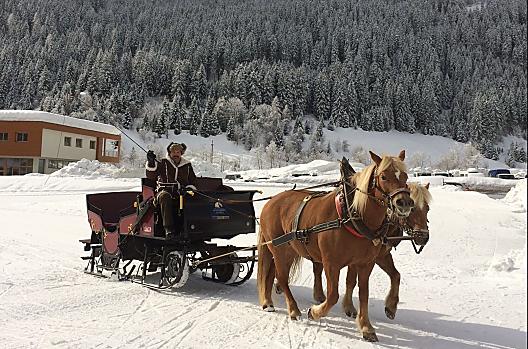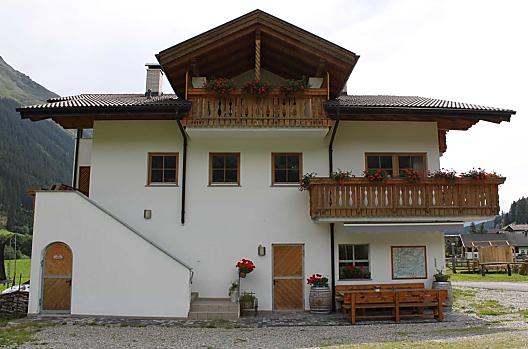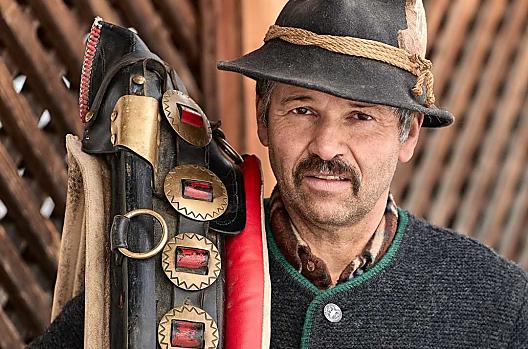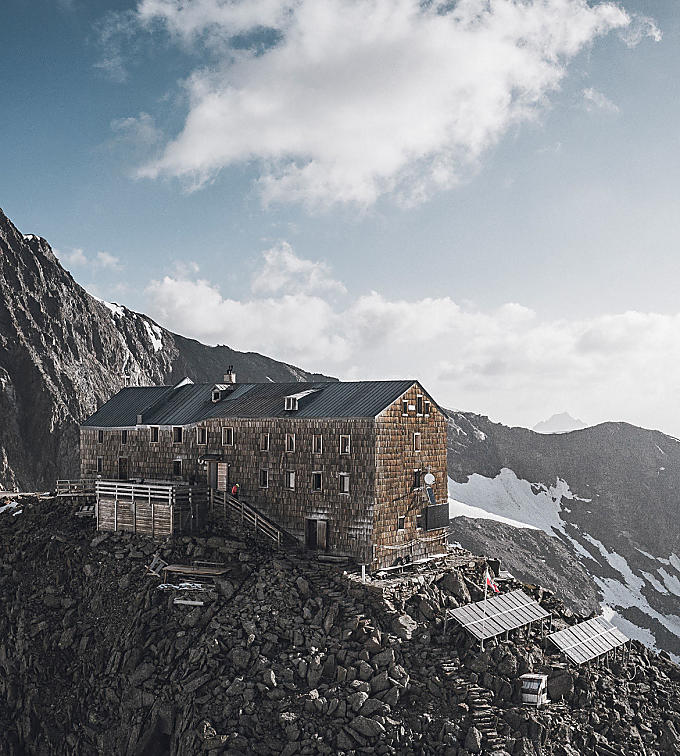
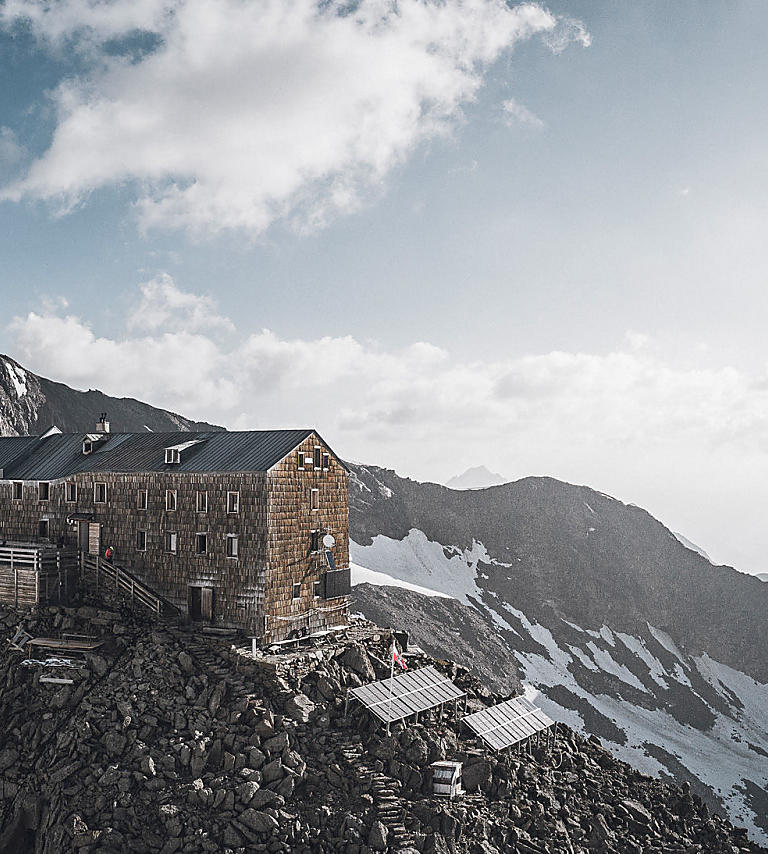
Day trip destination
Becherhaus: the highest-lying mountain refuge in South Tyrol
Lots of tours to the surrounding three-thousand-metre-high peaks start right on the doorstep of Becherhaus refuge. The refuge on the glacier makes a convenient base camp for mountaineers.
An area of elevated rocky ground rises up from the eternal ice on the South Tyrolean side of the Stubai Alps at the edge of the Übertalferner mountain. Here, at an impressive 3,195 metres above sea level, perches Becherhaus refuge, the highest mountain refuge in South Tyrol. Despite its audacious location, there is enough running water for 100 guests and warm meals are served in cosy dining rooms.
The shrine to the Madonna, 'Maria im Schnee' – a small chapel inside the refuge, also holds the same record for altitude.
Piece by piece
The question “Why doesn't he build his refuge at the peak of the Becher rock?“ was put at a meeting of the Alpine Association in 1891. Carl Müller had just had a refuge measuring two and a half by four metres built at Pfaffennieder between the Wilder Pfaff and Wilder Freiger mountain, which caused a lot of commotion.
The following year, Müller stood for the first time at the peak of the Becher mountain and could not rid himself of the idea of building a large refuge there. In January 1893, agreement was reached for the construction of Empress Elisabeth Refuge – as it was called at the time – and the first building phase began in March 1894. A total of 25 tonnes of building material were transported to Aglsboden on large horse-drawn sledges and later on a brake incline. The brake incline was constructed upwards piece by piece. The ascent to the Becherfels rock had to be overcome using sheer muscle power, however.
Bearers laboriously dragged building sand and heaved boards and beams, some of which were twelve metres long and 80 kilogrammes in weight, to the top. Frost, storms and snow tested the workers to the limits. Every day, they had to descend 600 metres after a few hours to the lower-lying Teplitzer Hütte refuge to then go up again the next morning. Despite this, the refuge was inaugurated on 16th August on the Kaiser's birthday, as planned.

Tours on the glacier
Just two minutes away from Becherhaus refuge sees the edge of the glacier. Prominent three-thousand-metre peaks such as the Wilder Freiger, Sonklarspitze, Botzer, Wilder Pfaff, Zuckerhütl and Hofmannspitze rise up around the refuge. Mountaineers do most of the ascent going up to Becherhaus refuge, and there are no great distances nor strenuous altitude gains involved in going up the surrounding mountain peaks from there.
The refuge is only staffed in the summer, when it becomes a base camp for a number of varied high Alpine tours. The hut keeper and his family provide their guests with culinary and Alpine comforts. In order to stay overnight at the Becherhütte, you have to announce your arrival beforehand. If you decide not to do your mountain tour you should cancel your booking at least one day in advance.
Fancy going to Becherhaus refuge?
There are several ways to reach the refuge. The first route needs no technical Alpine equipment, but a large dose of stamina and mountaineering experience. It leads to the refuge via Grohmannhütte and Teplitzer Hütte refuges in around seven hours. The two other tours involve crossing glaciers and require the relevant equipment. One may be done from Stubaital valley over Peiljoch pass and Fernerstube glacier to Becherhaus, while the other one is from Timmelalm pasture over Übertalferner mountain.
Becherhaus
Further information
Take the A22 to Sterzing, after the motorway exit take the 4th exit from the roundabout in the direction of Ridnauntal. Follow the road to Maiern (Landesmuseum Bergbau) for about 17 km.
By bus 312 (Sterzing/Vipiteno-Ridnauntal/Val Ridanna) from Sterzing to the bus stop "mining museum" in Maiern/Masseria.
Detailed timetable information at www.suedtirolmobil.info/en
Free parking at the mining museum in Maiern, Ridnauntal.
South Tyrol's highest refuge is located on the southern side of the Stubai Alps at an altitude of 3,195 meters. The Becherhaus was built in 1894 by the German and Austrian Alpine Club, but subsequently received several conversions and renovations. The latest renovation work on the highest building site in South Tyrol was completed in the summer of 2021 after about a year of work. The original construction period lasted from March to August 1894, for which 25 tons of material were brought from Maiern to the summit. In the same year, the hut was opened under the name "Kaiserin-Elisabeth-Schutzhaus". The name was then changed a few years later. The chapel "Maria im Schnee" was also built and can still be visited today.
Despite its impressive location, the refuge offers mountaineers running water, hot meals in the comfortable Stube dining room and space for 100 people; the fire safety equipment, technical facilities and energy-generation system are also up to date. The Becherhaus is open from the end of June to mid-September. Well-known peaks such as Wilder Freiger (3418 m), Zuckerhütl (3505 m), Sonklarspitze (3463 m) and Botzer (3250 m) round off the Becherhaus in the area of eternal snow.
Starting from the head of the Ridnauntal valley in the direction of the Aglsbodenalm, you reach the Becherhaus via the Grohmann and Teplitzer refuges. After the Teplitzerhütte, past the picturesque Vogelhüttensee lake, continue on trail no. 9 over boulders and well-secured passages with wire ropes and step bars, crossing a moraine to below the Becherfelsen rock. The last part of the hike is via serpentines up to the Becherhaus. Mountaineering experience, surefootedness and appropriate equipment are essential! The way back is via the ascent path.
Starting from the head of the Ridnauntal valley in the direction of the Aglsbodenalm, you reach the Becherhaus via the Grohmann and Teplitzer refuges. After the Teplitzerhütte, past the picturesque Vogelhüttensee lake, continue on trail no. 9 over boulders and well-secured passages with wire ropes and step bars, crossing a moraine to below the Becherfelsen rock. The last part of the hike is via serpentines up to the Becherhaus. Mountaineering experience, surefootedness and appropriate equipment are essential! The way back is via the ascent path.

